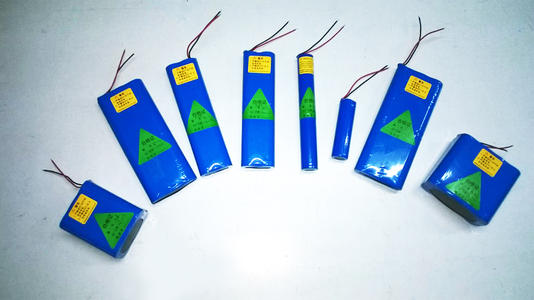Progress in the field of research on anode materials for lithium-ion batteries
Koalas were declared endangered in eastern Australia on Friday, with more and more koalas dying from disease, habitat loss, and other threats. Earlier, the koala was considered a vulnerable species, and the Commonwealth Department of the Environment changed its protection level to endangered on the east coast of Queensland, New South Wales, and the Australian Capital Territory. Many koalas in Australia are infected with chlamydia. The disease can cause blindness, infection, and infertility. Last year, the Australian Koala Foundation said Australia had lost about 30 percent of its koala population in the past three years. Without immediate action, the species could become extinct by 2050.
Unlike koalas, which are on the brink of extinction, the market demand for Lithium-ion batteries will grow substantially.
Lithium-ion batteries have become hotspots in energy research due to their higher energy density, long service life, and smaller volume compared with lead-acid, nickel-cadmium, nickel-metal hydride, and other batteries, and no memory effect. One. The negative electrode material is one of the critical components of lithium-ion batteries. It acts as the acceptor of lithium ions and realizes the insertion and extraction of lithium ions during the charging and discharging process. Therefore, the quality of the negative electrode material directly affects the overall performance of the lithium-ion battery. Graphite and modified graphite are widely used as anode materials for commercial lithium-ion batteries. Still, their theoretical capacity is only 372mAh/g, which significantly restricts the development of high-energy power batteries. Group IV element (silicon, germanium, tin)-based anode materials have become a research hotspot for next-generation lithium-ion batteries due to their high theoretical capacities (3579mAh/g, 1600mAh/g, 994mAh/g, respectively). However, silicon, germanium, and tin-based anode materials have the problem of significant volume expansion during the charging and discharging process. Long-term charging and discharging will cause the pulverization of particles and the shedding of active materials, thus affecting the cycle stability of lithium-ion batteries.

In recent years, the advanced lithium-ion battery team led by Han Weiqiang, a researcher at the Institute of New Energy Technology affiliated with the Ningbo Institute of Materials Technology and Engineering, Chinese Academy of Sciences, has made a series of progress in high-capacity silicon, germanium, and tin-based anode materials. In terms of high-performance silicon-based anode materials, researchers have developed a low-cost, high-capacity, and high-stability porous silicon-based anode material technology. By carbon coating, the porous silicon, the performance of the silicon-based negative electrode material for lithium-ion batteries is further improved. The capacity retention rate of the silicon-carbon composite electrode material was 86.8% after 300 charge-discharge cycles. Related research has applied for Chinese invention patents (201410150747.5, 201410276413.2), and the research results were published in NanoEnergy (2015, 11, 490-499) in the form of Communication.
Based on the previous work, the team synthesized and prepared a series of new phase MSn5 (M=Fe, Co, Fe0.5Co0.5) alloy nano-anode materials using the wet chemical method of improving polyols. The synthesized FeSn5 alloy nanoparticles have a theoretical capacity of 929mAhg-1 when used as a negative electrode material for lithium-ion batteries, which is the material with the highest theoretical specific capacity among the reported M-Sn (M is an electrochemically inert metal) alloy. The researchers prepared a series of Fe0.5Co0.5Sn5 new phase alloy nanoparticles with a 30-50nm particle size range, which further expanded the Co-Fe-Sn phase diagram. Related achievements have applied for invention patents (2013104705134, 201310706760X, 2103715406A). At the same time, the charge-discharge mechanism was deeply discussed and explained by in-situ XAFS, in-situ XRD, and electrochemical test methods. The research on the electrochemical mechanism of this series of tin-based new phase alloy anode materials provides effective theoretical guidance for the team's subsequent development of high-performance tin-based anode materials. Relevant results were published in JournalofMaterialsChemistryA (2015, 3(13):7170-7178) and ACS Appl.Mater.Interfaces (2015,7,7912-7919).
The team has also made progress in the research and development of long-life titanium-based anode materials, applying for an invention patent (201310685139. X), and the relevant results were published in the Journal of Materials Chemistry (2014(2), 10599-10606).
High-quality lithium-ion batteries supplier
Luoyang Moon & Star New Energy Technology Co., LTD, founded on October 17, 2008, is a high-tech enterprise committed to developing, producing, processing, selling, and technical services of lithium-ion battery anode materials. After more than 10 years of development, the company has gradually developed into a diversified product structure with natural graphite, artificial graphite, composite graphite, intermediate phase, and other negative materials (silicon-carbon materials, etc.). The products are widely used in high-end lithium-ion digital power and energy storage batteries. If you are looking for Lithium battery anode material, click on the needed products and send us an inquiry:sales@graphite-corp.com.
At present, international supply chains were shocked, and logistics and transportation efficiency decreases. Geopolitical conflicts further aggravate uncertainties about the European and American economic recovery and the global commodity supply. For this reason, I assume the price of the Lithium-ion batteries would not decrease significantly in the short term.
Inquiry us
PREVIOUS NEWS
What exactly is graphene?
NEXT NEWS